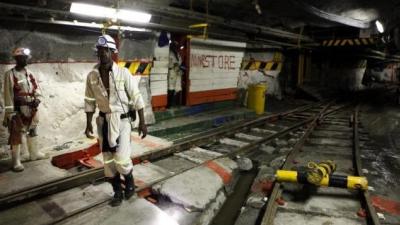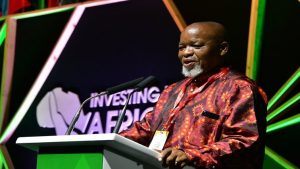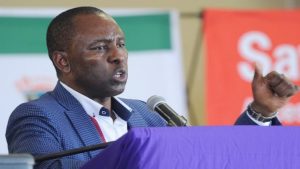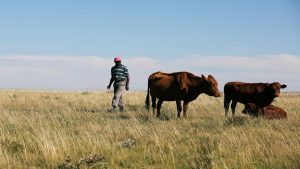As the 2018 Mining Indaba kicks off in Cape Town on Monday, issues of health and safety in the mining industry will still be on the minds of delegates, as the day marks exactly two years since three workers were trapped underground at Vantage Gold’s Lily Mine in Barberton in Mpumalanga.
The bodies of Lily Mine workers Yvonne Mnisi, Pretty Nkambule, and Solomon Nyirenda remain underground, despite Deputy Mineral Resources Minister Godfrey Oliphant saying late last year that the container in which the workers were trapped in February 2016 was likely to be retrieved by January 2018.
The issue of mine workers’ safety was again sharply brought to the forefront this week when over 1 000 Sibanye-Stillwater employees were successfully rescued from underground at Beatrix Gold Mine in Welkom in the Free State, following a power failure at the mine as a result of a severe storm.
A total of 955 night shift workers were stuck underground from Wednesday night and could not be hoisted to the surface until the early hours of Friday morning. At least 336 workers had been rescued before the emergency power supply from backup generators also cut out.
In August last year, five workers died at Hamony Gold’s Kusasalethu mine in Carletonville after being trapped underground for days following a seismic event.
At the time, Mineral Resources Minister Mosebenzi Zwane said the Kusasalethu incident should be a “turning point” in the health and safety of the country’s mining industry, and government would be tougher in exercising its powers on regulatory issues.
These are the realities that Zwane will face when he officially opens the annual Investing in African Mining Indaba and promotes South Africa’s mineral wealth and competitiveness on Monday. The Indaba is the world’s largest gathering of mining’s most influential stakeholders and decision-makers in African mining.
Zwane will have his job cut out when he engages with delegates to rally the industry’s prospects, government’s plans, and investment opportunities in South Africa, amid policy uncertainty and looming job losses due to the economic downturn. The industry’s application to review the implementation of the contentious Reviewed Mining Charter is set to be heard in the North Gauteng High Court on February 19 to 21.
Zwane will deliver the official opening address, visit the South African exhibition stand to engage exhibitors, and later host a question and answer session with the media. The Indaba runs from February 5 to 8 at the Cape Town International Convention Centre (CTICC).
Meanwhile, activists from Africa, Asia, and Latin America – members of civil society, faith-based organisations, mining-affected and impacted community members, academics, and other stakeholders seeking “justice” in mining and the extractives industry – will also gather in Cape Town for a three-day “alternative mining indaba”. The meeting will receive inputs and lessons from other mining communities and will culminate in a march to present a memorandum to the African Mining Indaba at the CTICC.






